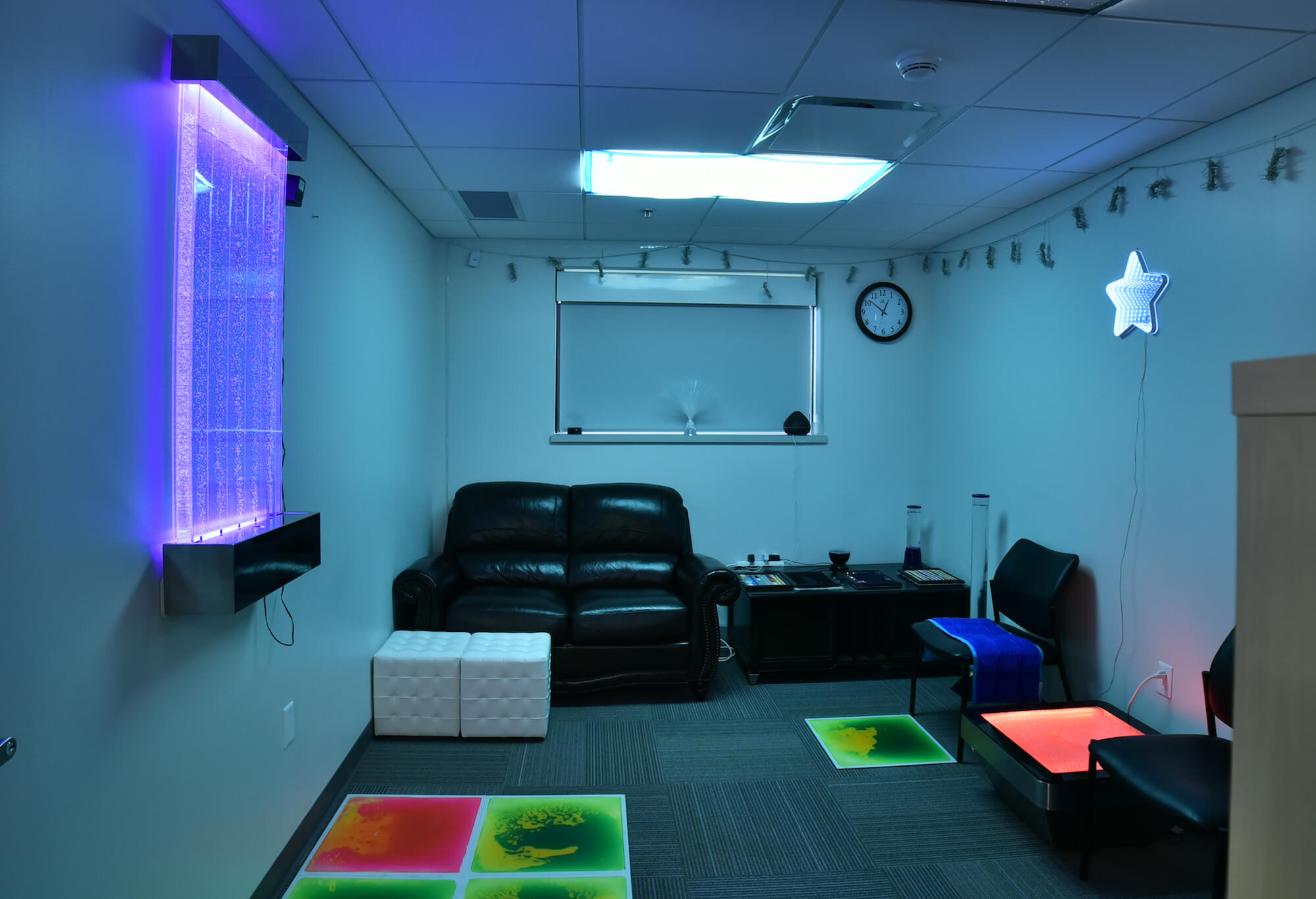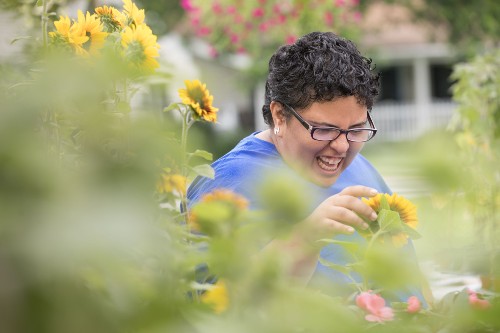The InVisionary
Many of the people we support at InVision have sensory differences. Sensory Processing Disorders (SPD) are common in those diagnosed with Autism Spectrum Disorder (ASD), but SPD can also be found outside of ASD. Interestingly, sensory processing disorders are not recognized by psychiatrists, rather they are treated by occupational therapists. These issues can manifest in many different ways.
Issues with these three kinds of perception can manifest as poor muscle tone; lack of motor coordination (e.g., hand-eye coordination) or balance; or delayed motor skills.
In general, one could say that compared to the average reaction, those with SPD are hypo- or hyper-reactive to sensory information. Such differences may lead to the misinterpretation of sensory information that may be jarring or confusing to those with typical sensory perception. People with SPD may feel overwhelmed with seemingly normal sensory input, such as being in a room with florescent light bulbs. On the other hand, they may seek intense sensory experiences, such as deep pressure (e.g., being squeezed or hugged). Many with SPD may lack insight into their differences and the experiences of others.
Given the above information, SPD can be divided into three categories:
In the meantime, we can do many things to assist our clients who experience SPD.

Firstly, we want to think in new ways about the sensory world. This can include seeing a client’s behavior as a function of seeking a specific type of stimulation, avoiding it, or not even noticing it. This will help us to avoid thinking that unusual behavior is simply ‘attention-seeking behavior.’
Secondly, we can try to accommodate the behavior to a reasonable extent. This can include making an environment “sensory-friendly”, such as offering a dimly lit room; providing opportunities for movement and deep pressure (e.g., wearing a weighted vest); considering food options that have a tolerable texture and taste (e.g., yellow mustard can be "spicy" to some with SPD); helping a client navigate an escalator; practicing catching with a spongy ball; creating a swing or hammock; enacting portion-control with meals; establishing bathroom time at regular intervals; using a balance beam; playing video games that involve visual tracking of objects; using ear plugs or coverings (e.g., construction, swimmer’s, or musician’s); applying VapoRub under the nose; planning for outings in new environments; and many more.
We at IBH wish to help with SPD issues and any other concerns that might arise with the people we support. It is important that we view the people we support with wonder; doing so will allow us to learn about them and vice versa. This connection, in and of itself, is healing.
Please contact our Office Manager, Lisa Lewis, at 724-933-2961 or llewis@invisionhs.org, and she will connect you to an IBH staff member who can help. We also want to learn from you. Since you know the person you support best, your techniques can assist us in the work we do.
What are sensory processing disorders?
Simply put, they are atypical interpretations of the various types of sensory input, including:- Visual
- Auditory
- Tactile
- Smell
- Taste
- Vestibular
- Proprioception, and
- Interoception
Issues with these three kinds of perception can manifest as poor muscle tone; lack of motor coordination (e.g., hand-eye coordination) or balance; or delayed motor skills.
In general, one could say that compared to the average reaction, those with SPD are hypo- or hyper-reactive to sensory information. Such differences may lead to the misinterpretation of sensory information that may be jarring or confusing to those with typical sensory perception. People with SPD may feel overwhelmed with seemingly normal sensory input, such as being in a room with florescent light bulbs. On the other hand, they may seek intense sensory experiences, such as deep pressure (e.g., being squeezed or hugged). Many with SPD may lack insight into their differences and the experiences of others.
Given the above information, SPD can be divided into three categories:
- Sensory Modulation Disorders (SMD)
- Sensory-Based Motor Disorder (SBMD), and
- Sensory Discrimination Disorder (SDD)
Treatment for Sensory Processing Disorders
As noted above, occupational therapists (OT) often work with SPD via what is called sensory integration. So, we can refer our clients to an OT who will provide sensory integration treatment; though, OT who work with adults are rare. One of IBH’s long-term goals is to address this shortcoming by offering occupational therapy in-house.In the meantime, we can do many things to assist our clients who experience SPD.

Firstly, we want to think in new ways about the sensory world. This can include seeing a client’s behavior as a function of seeking a specific type of stimulation, avoiding it, or not even noticing it. This will help us to avoid thinking that unusual behavior is simply ‘attention-seeking behavior.’
Secondly, we can try to accommodate the behavior to a reasonable extent. This can include making an environment “sensory-friendly”, such as offering a dimly lit room; providing opportunities for movement and deep pressure (e.g., wearing a weighted vest); considering food options that have a tolerable texture and taste (e.g., yellow mustard can be "spicy" to some with SPD); helping a client navigate an escalator; practicing catching with a spongy ball; creating a swing or hammock; enacting portion-control with meals; establishing bathroom time at regular intervals; using a balance beam; playing video games that involve visual tracking of objects; using ear plugs or coverings (e.g., construction, swimmer’s, or musician’s); applying VapoRub under the nose; planning for outings in new environments; and many more.
We at IBH wish to help with SPD issues and any other concerns that might arise with the people we support. It is important that we view the people we support with wonder; doing so will allow us to learn about them and vice versa. This connection, in and of itself, is healing.
Please contact our Office Manager, Lisa Lewis, at 724-933-2961 or llewis@invisionhs.org, and she will connect you to an IBH staff member who can help. We also want to learn from you. Since you know the person you support best, your techniques can assist us in the work we do.



Comments (0)